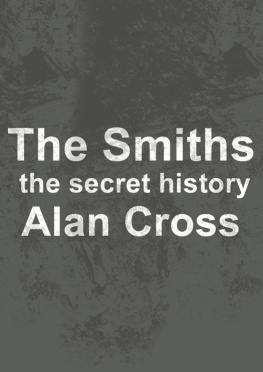Musician, Producer, Artist, Philosopher, Oblique Strategies
You would be forgiven if you first mistook the man for an accountant or a postal clerk. At a second glance, you might speculate that he was a tenured university professor at a prestigious school such as Oxford or Cambridge. A more wild guess would be that he was an artist of some sorta writer perhaps. Now were getting closer to the truth.
It takes Brian Eno a long time to explain what he does for a living. His curriculum vitae is surely one of the most colorful you will ever see: glam rocker, multimedia artist, record producer, world traveler, philosopher, thinker, artistic foil, computer scientist, musical visionary, futurist and all-around egghead. Although his own recordings are hardly best sellers, his methods and theories have influenced music through three decades. From his position in the background as a record producer, Eno has helped othersDavid Bowie, the Talking Heads, U2move mountains. His innovative studio practices have had a massive effect on everything from how music is composed to how it can be perceived. As a musician himself, flirting on the outer fringes of the rock universe, he broke some of the original ground for much of todays ambient, techno and even new age music. All this from a man who prefers to describe himself as a bald and grumpy non-musician.
Brian Peter George St. John le Baptiste de la Salle Eno was born May 15, 1948, in Woodbridge, England, the descendent of three generations of postmen. As a child, he became fascinated with the music played on American Armed Forces Radio. This Martian musicso-called because the sounds of American doo-wop and R&B seemed to come directly from space to the sedate English countrysidesteered young Brian into art school. At the Winchester School of Art (where he eventually became president of the Students Union), he discovered the work of such avant-garde musicians as La Monte Young, John Cage, Terry Riley and, eventually, the Velvet Underground. Between 1964 and 1969, Eno studied music along with conceptual painting and something that became known as sound sculpture. One of his favorite pursuits was experimenting with reel-to-reel tape recordersmaking what we would call tape loops todayto treat and shape common sounds into something totally new. One of his first projects was a recording of a metal lampshade being struck, overdubbed with a poetry reading.
Enos first solo release was Here Come the Warm Jets (released late 1973), an album that listed his contributions as simplistic keyboards, snake guitar, electric larynx and synthesizer. Despite being pretty experimental and weird, the album did manage to make the top 30 in the UK, partly on the strength of a single entitled Seven Deadly Finns.
After he joined a group called the Winkies in early 1974, Enos health took a turn for the worse. He was hospitalized with a collapsed lung just five days into the bands English tour. Part of his convalescence included a trip to San Francisco, where he found his next musical inspiration in the form of Chinese opera. The resulting stream-of-consciousness Taking Tiger Mountain (By Strategy)the title is taken from a Chairman Maoera revolutionary operawas in the stores by the fall. Further study of Chinese culture and I Ching philosophy eventually led to the creation of Enos oblique strategies approach (see ).
Enos bad luck with his health continued in 1975 when a car accident left him bedridden for several months. As painful as the experience was, it led Eno down a path of discovery involving the subtle use of music in the creation of an environment. Because he was unable to move and incapable of even adjusting the volume on his stereo after a visitor put on some quiet harp music, Eno came to the conclusion that music could be seen to have the same properties as color or light. Careful blending of music with visual input could create a harmonious and balanced sensory experience. Unlike the cold, harsh electronic world of Kraftwerk, Enos synthesizers had soft edges. The compositions unfolded slowly, mesmerizing the listener with gentle, flowing repetition. This music tinted the atmosphere and, when done correctly, produced a self-regulating and very pleasing environment. These werent songs that needed to be heard; they were soundscapes that needed to be experienced. It was the birth of a new genre that Eno called ambient music.
Enos first attempt at creating ambient music was Another Green World (1975), but Discreet Music (also 1975) was his first full-blown ambient recording. Side one featured various synthesizer loops meandering through a series of movements while the second side contained variations of Pachelbels Canon in D Minor. Discreet Music became the first release in a 10-album series of experimental recordings on his new label, Obscure.
While Eno continued with his ambient and left-brain pop experiments with Before and After Science (1977), Music for Films (his first true ambient record, 1978) and Music for Airports (1979), he was also being sought as a collaborator and producer. Eno genuinely enjoyed the artistic and intellectual challenge presented by his projects with Robert Fripp, John Cale, Nico, and an atmospheric German band called Cluster, among others. Even though Enos methods had earned him some notoriety (especially among those on the fringes of rock and roll), the phone call from David Bowie came as a surprise.
In the mid-70s, Bowie was one of the biggest stars in the world, thanks to his music, his shape-shifting personas and his ultra-theatrical tours. But by the end of 1976, he had hit a creative wall after a six-year run of success. His inability to think of what to do next was further addled by the soul-sucking coke-and-booze excesses of his adopted Los Angeles home. Determined to clean up and move on, Bowie decided to isolate himself in Berlinand he wanted Eno to help him with his next album. Bowie was a great admirer of the textures and sound manipulations of Another Green World and asked Eno if he could show him how to take his music in a similar direction. Enowho had quite enjoyed Bowies last album, Station to Stationaccepted the challenge.
In the end, Eno produced three albums for Bowie, the so-called Berlin trilogy that revitalized his flagging creative energies: Low (1977), Heroes (1978) and Lodger (1979). As an active collaborator on much of the material, Eno was able to push Bowie into new territory. Using new synthesizers, new outboard studio effects and the ever-present oblique strategies cards as guides, Eno helped Bowie not only break out of his slump, but reformulate his outlook on music in general.
Eno had other important late-70s production credits. On May 13, 1977, Eno was in the audience when one of his favorite new American art-punk bands, the Talking Heads, played the Rock Garden in London. Impressed with the Heads combination of quirkiness and intelligence, he invited the band back to his house to discuss the possibilities of some kind of future alliance. When he moved to New York in 1978 to further immerse himself in the underground Manhattan music scene, he offered to produce the Heads second album. He ended up producing three records for the band, guiding them through their metamorphosis from Bowery new wave bar band to one of the most progressive and radical-sounding group of the 1980s.
Working as an unofficial fifth member of the group (feel free to make comparisons with George Martin and the Beatles), Eno encouraged the Talking Heads to take more chances with rhythm and electronic processing. Through the three albums featuring Enos touchMore Songs about Buildings and Food (1978), Fear of Music (1979) and Remain in Light (1980)the Heads developed a unique style underpinned by complicated non-Western rhythms and percussive effects that often involved subtle studio trickery. At the same time, the melodies and chord changes that floated over this pulse were simplified. The result was a sound that was both complex and clean, a fresh and invigorating fusion of rock and African-inspired dance rhythms. This approach helped the Talking Heads sell millions of records.














